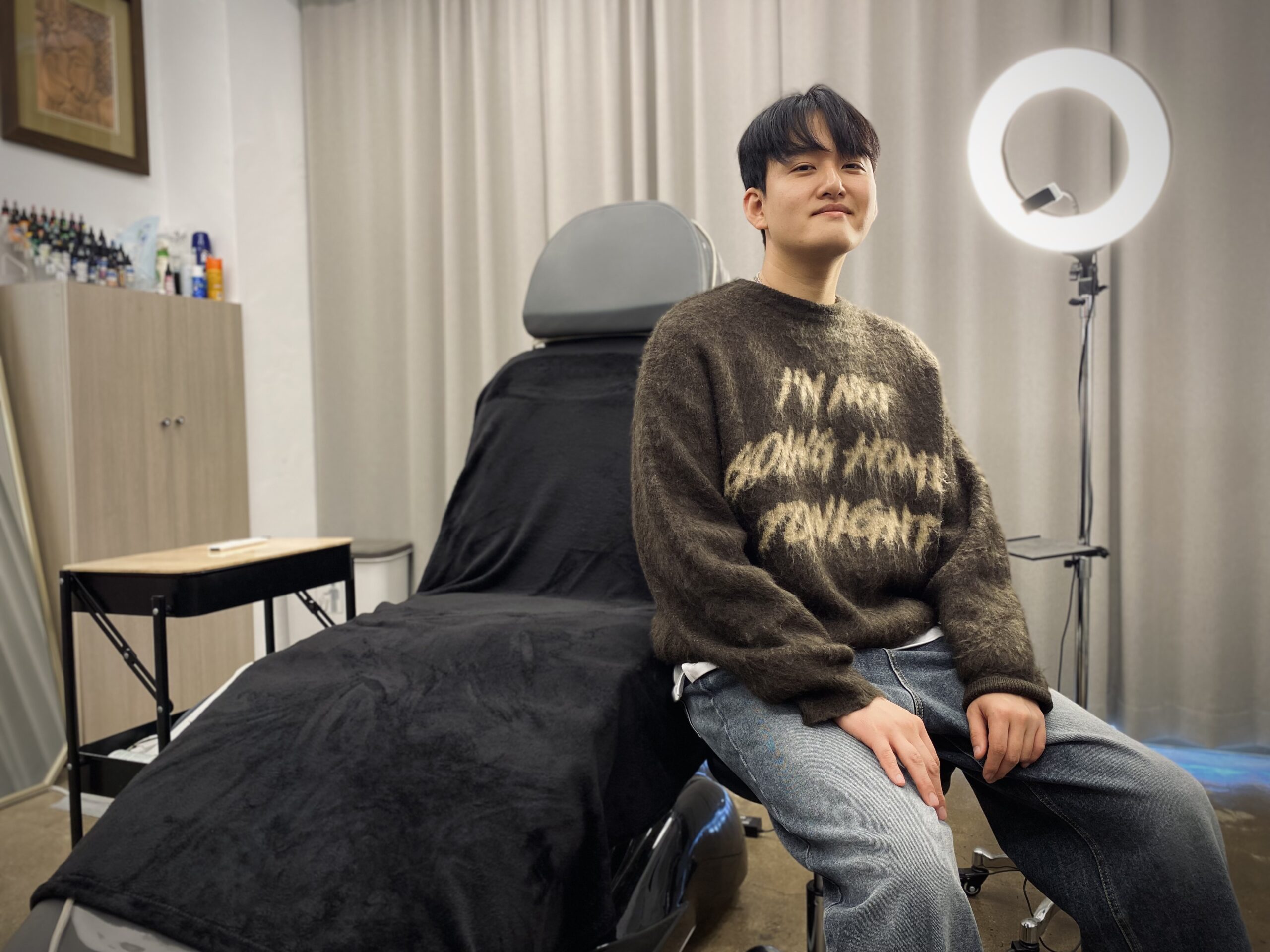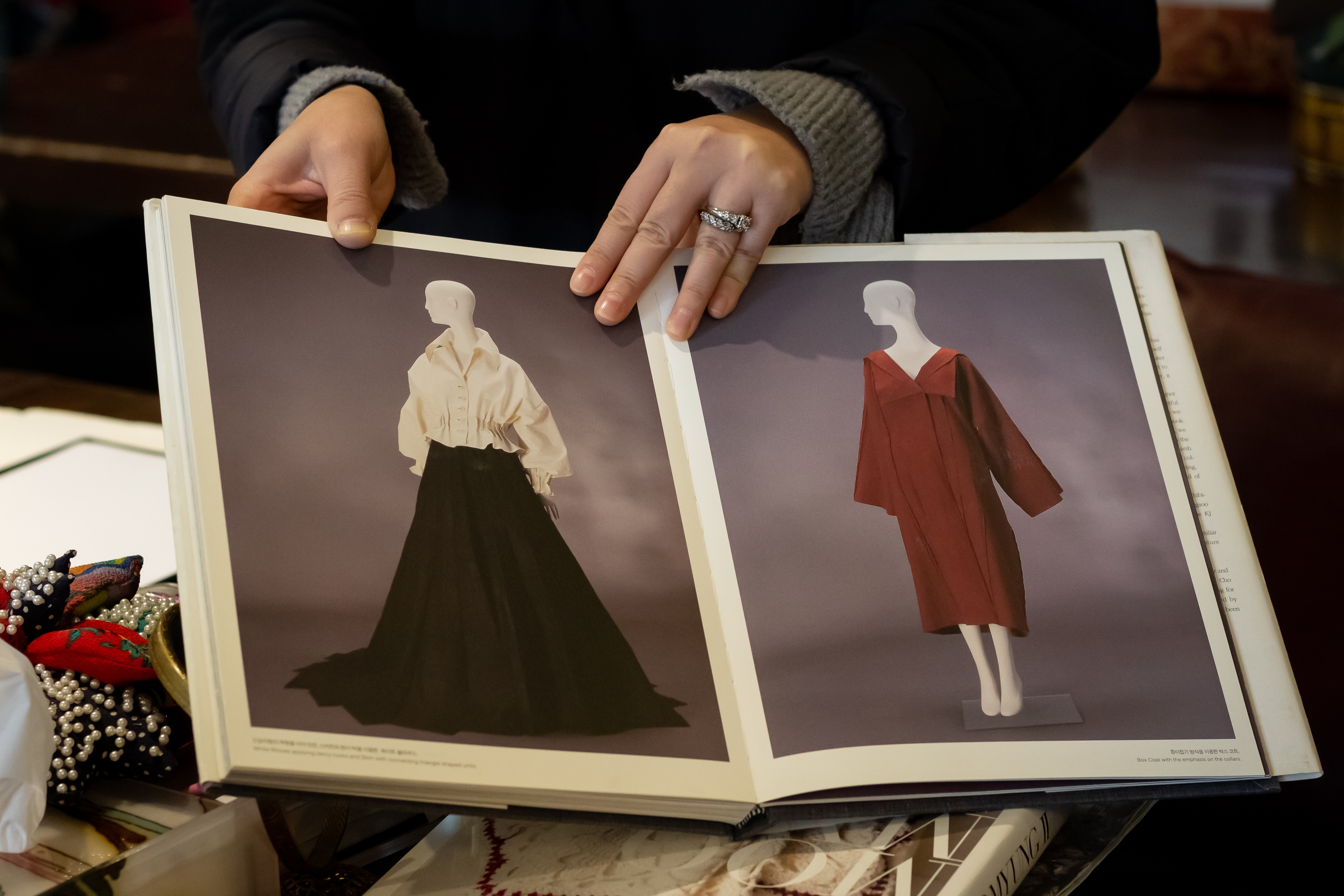“Gentle Yet Majestic”: Celebrated Designer Keeps Korean Cotton Alive
Written by Tara Kulash
From the windows of Demain Art Hall in Gwangju, passersby might wonder whether they’re peering into a clothing boutique or an art gallery; after all, sitting as equals on display are a mannequin in a beret and a life-sized sculpture holding a mask.
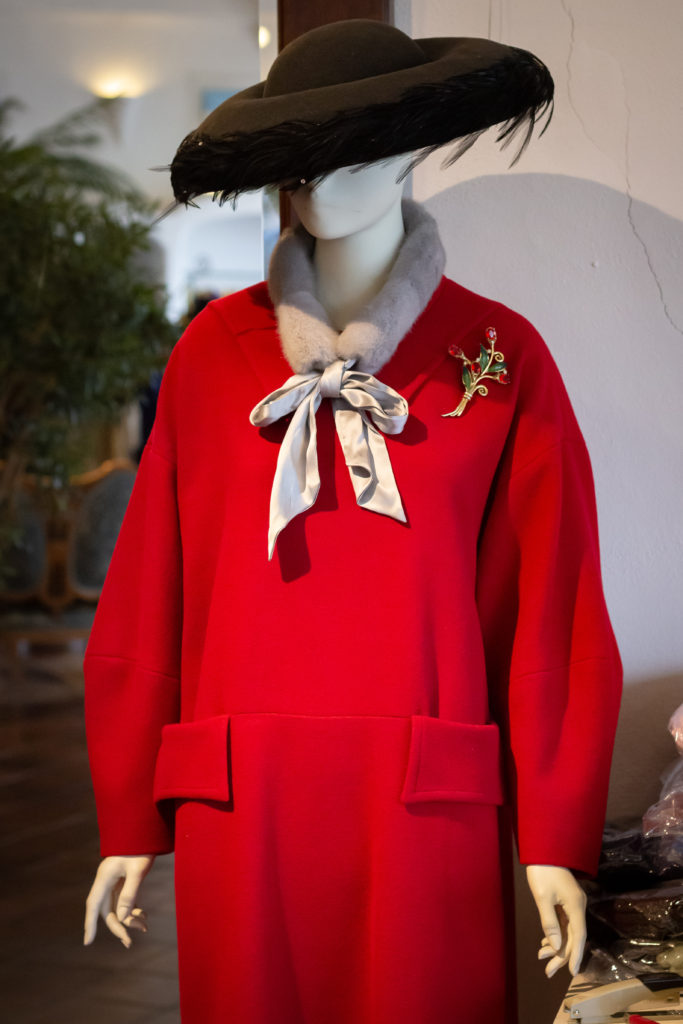
Korean designer Moon Kwang-Ja (문광자) has been blurring these lines between fashion and art for 51 years now, garnering a name for herself in the international world of Art to Wear, while representing Korea through her passion for mumyeong (무명), a traditional Korean cotton.
Now in danger of becoming obsolete, mumyeong is said to have been introduced to Korea in 1363 by the Korean emissary Moon Ik-jeom, who, legend has it, smuggled the cotton seeds in from China in the hollow handle of a bamboo inkbrush. Koreans embraced this new material, which kept them warmer in the harsh winters than their traditional hemp clothing.
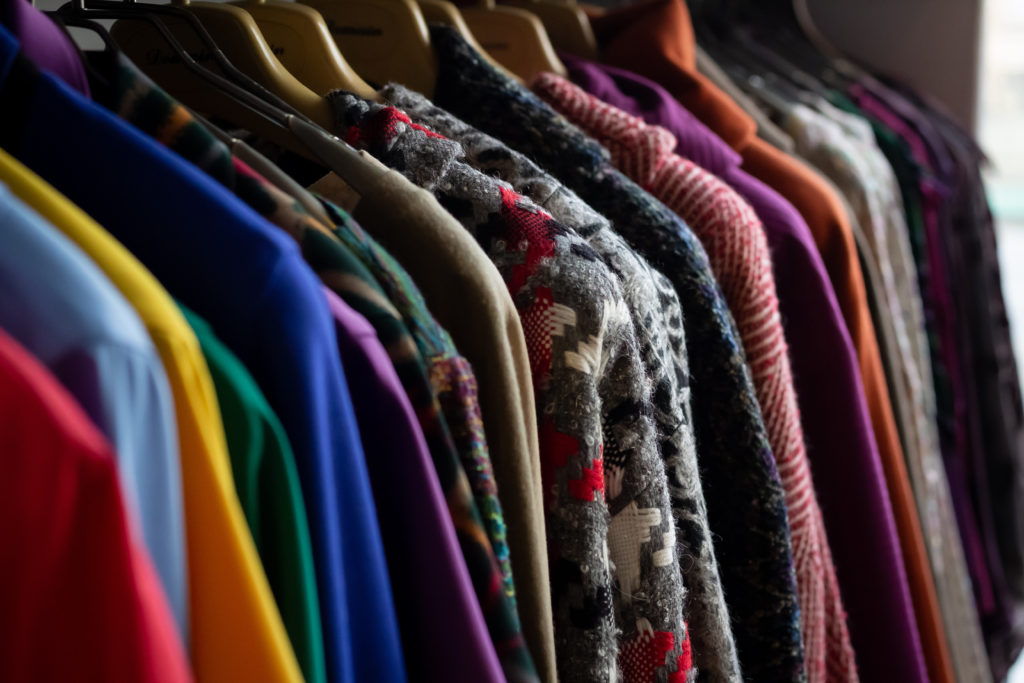
The material doesn’t come without its obstacles, though. It can be hard to weave, expensive to dye, and difficult to care for. As mass imports of Chinese cotton emerged during the Japanese occupation of Korea,
mumyeong began to lose its popularity. At a time when Moon Kwang-Ja was looking for a new material to work with, she received a visit from a natural dyer who was searching for a designer to make mumyeong fashionable.
“It was a perfect match,” she says.
Not only that, but Moon is the 23rd granddaughter of Moon Ik-jeom, the emissary who introduced mumyeong to Korea.
“And maybe that’s fate,” she says with a smile.
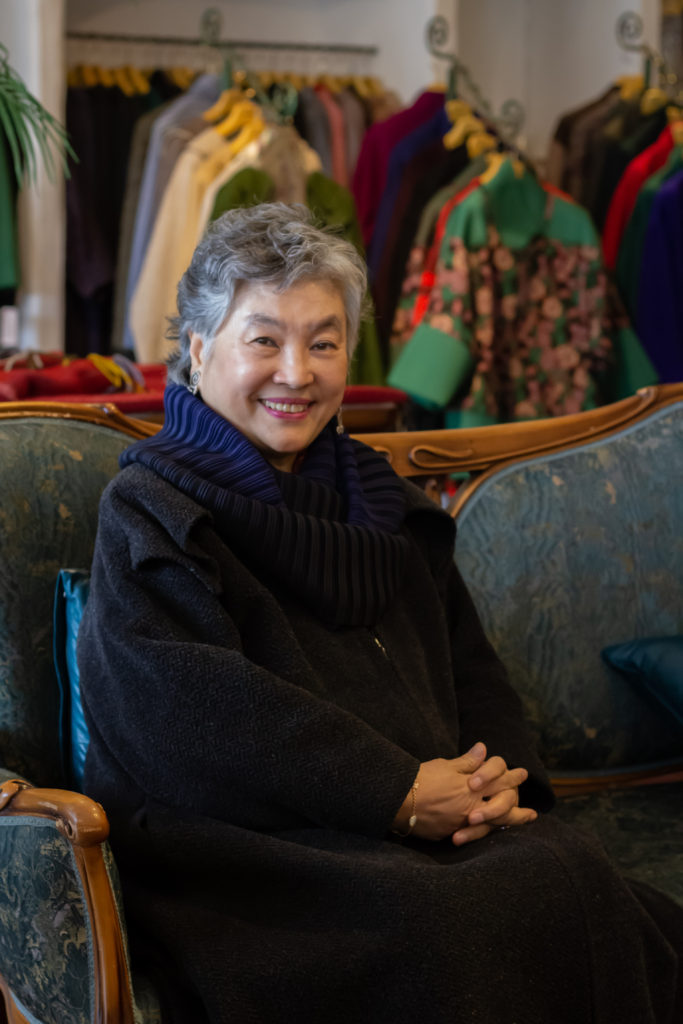
Inside Demain Art Hall, which is named after her clothing line, Demain, surreal and abstract paintings and sculptures fill whatever space hasn’t been taken up by clothing racks and furniture. Hats she’s collected, as well as jewelry and bags made by her daughter, adorn the gallery, too, which she’s willing to sell if it completes an outfit. A black and white portrait of Moon painted by her son hangs behind her as she sits at a dining table in the center of it all, sharing with me the two massive hardcover books she published in 2004 and 2014. Titled Moomyung 1 and Moomyung 2, respectively, each is filled with photos of her work, as well as her story. As she points out, publishing books is almost unheard of for Korean fashion designers, which should show how passionate she is for mumyeong.
“Mumyeong is unpretentious and elegant,” she says in her books. “We can compare it to a person who is modest and trustworthy, … gentle yet majestic.”
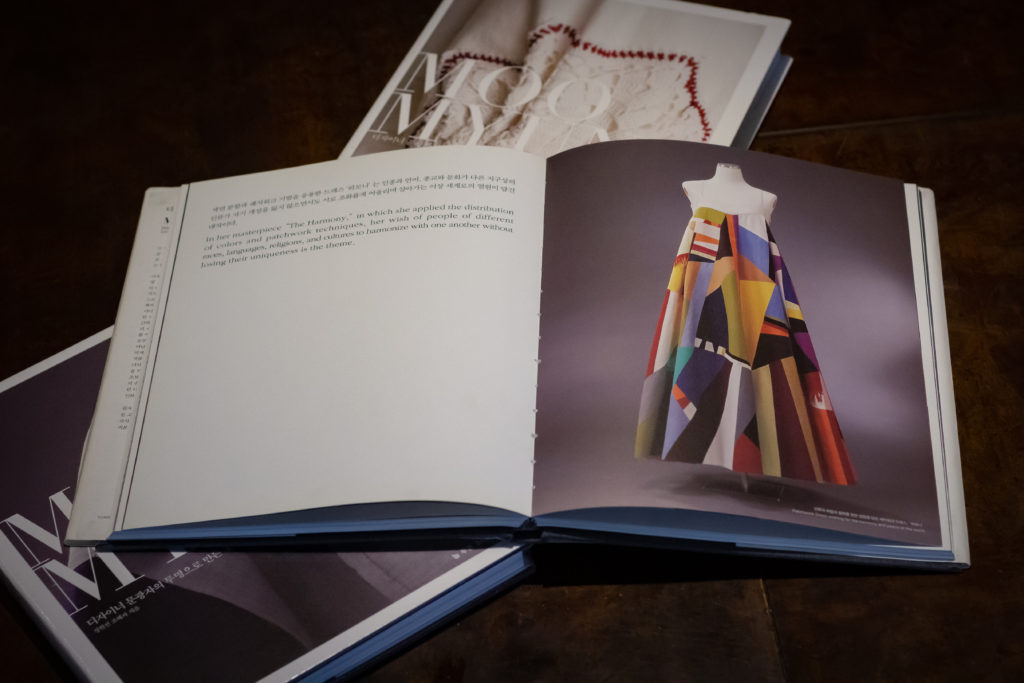
Possibly her proudest achievement dates back to 2003, when Moon was invited to display her work at Anthem Gallery in the SoHo neighborhood of New York City. She was participating in an exhibition to celebrate 100 years of Korean immigration when Julie Schafler Dale, author of the iconic book Art to Wear, saw Moon’s work and was moved enough to sell it in her own boutique, Julie: Artisans Gallery. In the “Moomyung” books, Schafler Dale says of Moon’s work, “I was intrigued by the elegance and fantasy of the forms, which were both retro and futuristic, yet consistently provocative.”
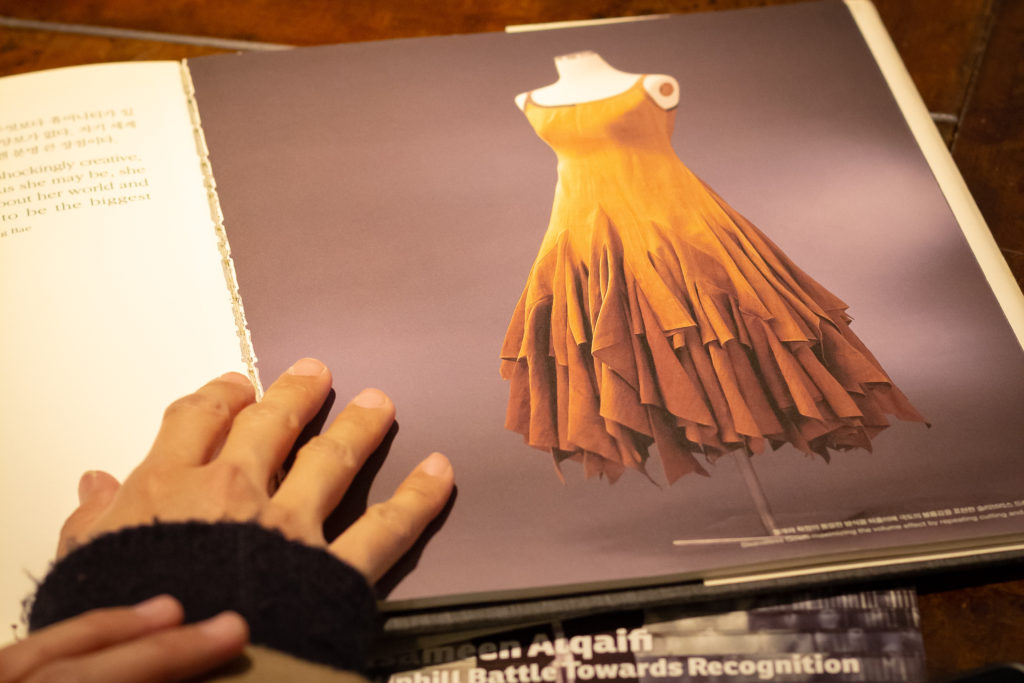
Indeed, Demain clothing has as versatile a feel as the inspirations it’s born of. A flowing brown wool dress, Moon says, was inspired by the thought of gifting someone a bouquet of flowers. A white blouse with fancy tucks and its skirt were made with the image of famous Korean-American opera singer Hong Hei-kyung in mind, who later wore the outfit for a finale performance. Other inspirations include fragrances, literature, and her relationship with God.
Moon also opened a store in California in the 1990s, which received positive reviews, but after realizing that exporting was expensive and “impossible,” she decided to close.

These days, Moon keeps 1,000 rolls of mumyeong on hand in case the material runs out for good. At a mere 33 centimeters in width, one unit of mumyeong can cost $2,000. For this reason, Moon charges her clients only for the material. She also sticks mostly to white fabric, as dying the traditional cotton is an expensive process. Instead, she adds color accents and trims.
Although mumyeong only accounts for 5–10 percent of her total work, Moon says it’s easily “the most important” to her.
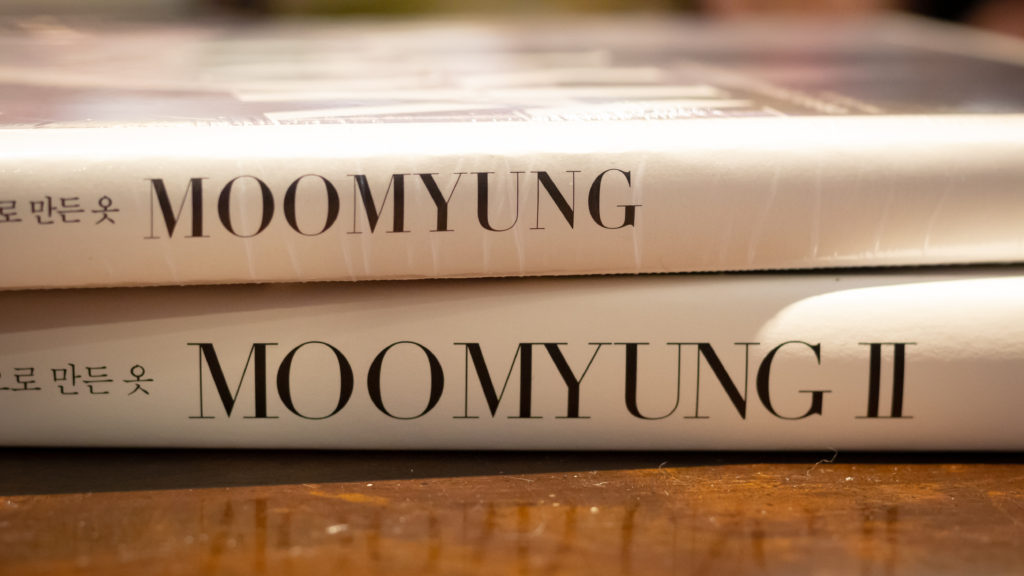
In fact, Moon says she knows of only one other person who may still be working with mumyeong and that person must be more than 90 years old by now. She fears for its future. Moon’s daughter and granddaughter are carrying on the family torch for fashion, and she wants to protect this rare art form for them. Every season, she says, she’s thinking of what’s next. She loves her work, arriving first to the shop every day, or “running to work,” as she puts it. And after 51 years, Moon wants to “maintain that spirit – like a tree,” she says with a mischievous smile in her eyes. “Keep what’s good, discard the rest.”
Original interview translated by Park Min
Photographs by Sarah Pittman
The Author
Tara Kulash is a journalist and English teacher living in Suncheon, Jeollanam-do. Before Korea she lived in Spain, and before that she worked as a newspaper reporter in the United States for the St. Louis Post-Dispatch and The Oregonian in Portland, Oregon, where she focused on healthcare and environmental news.


